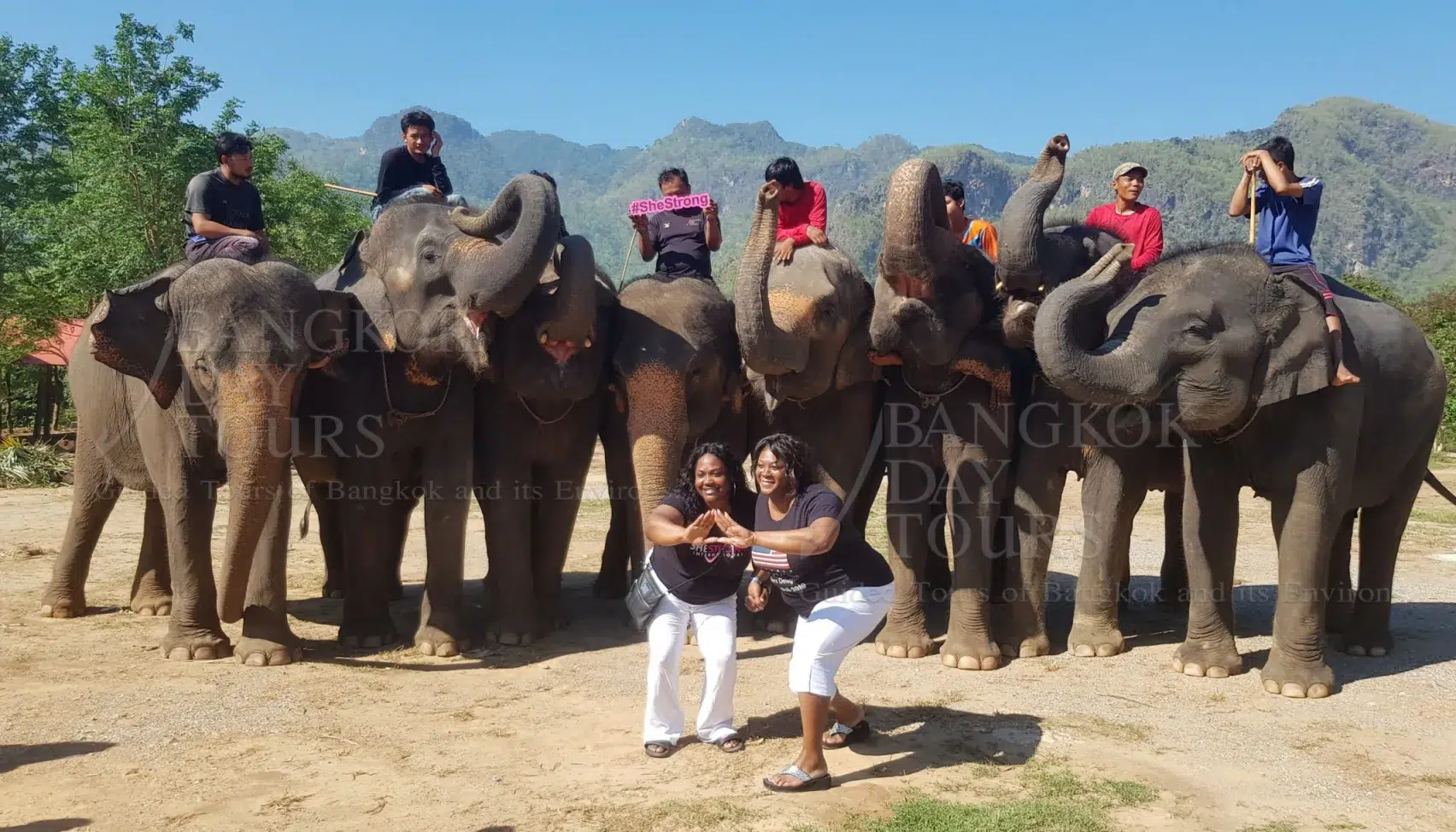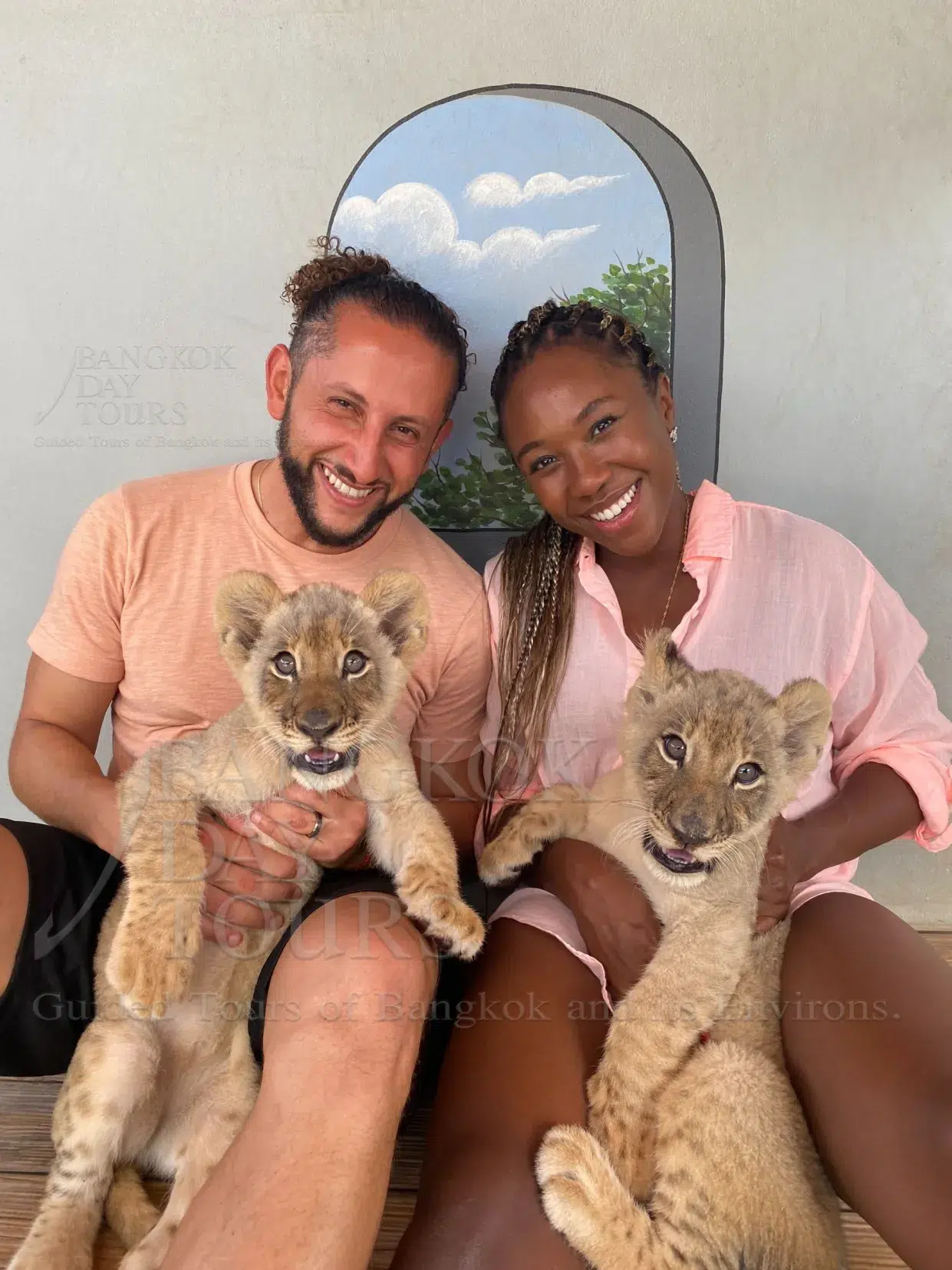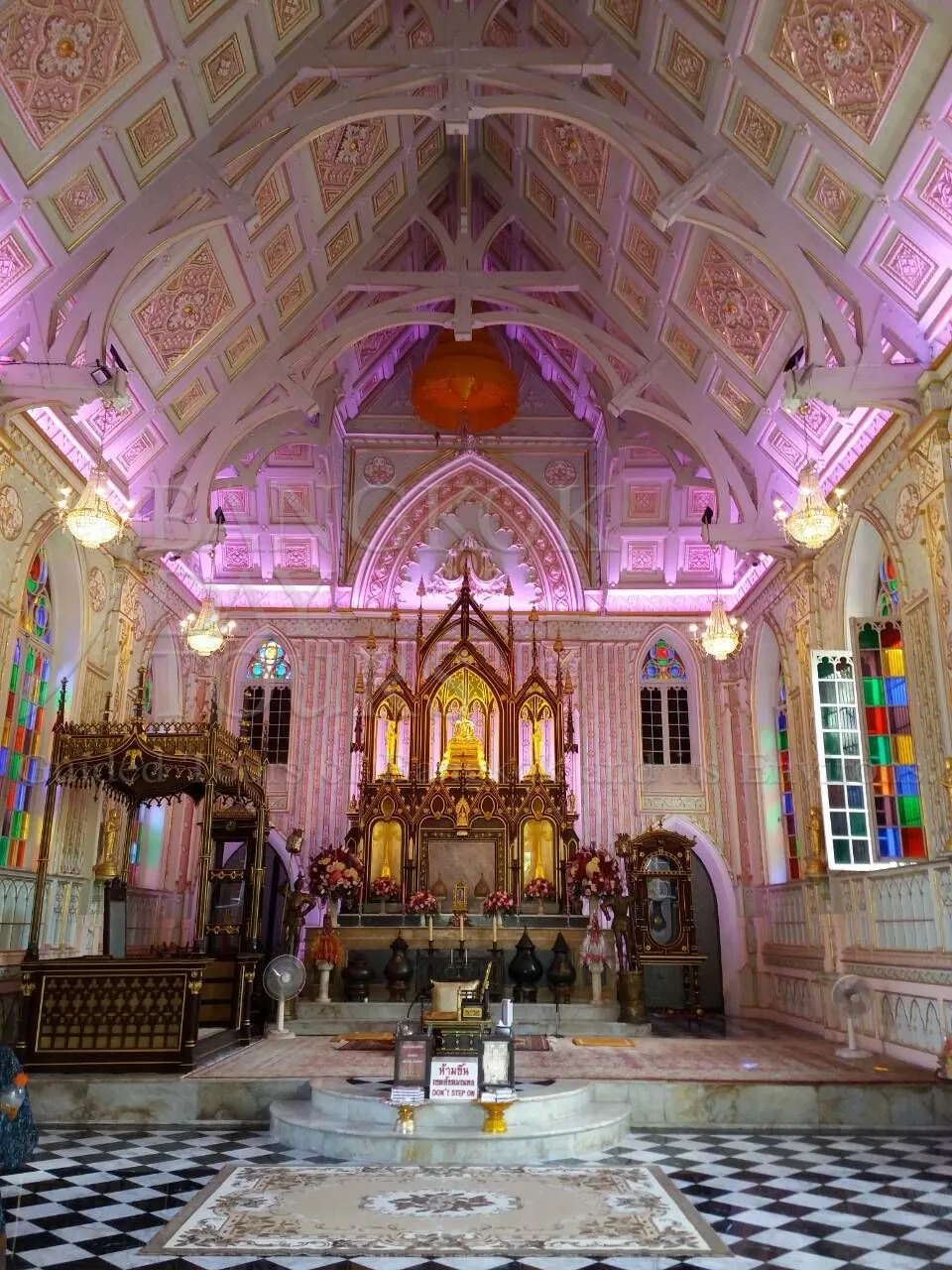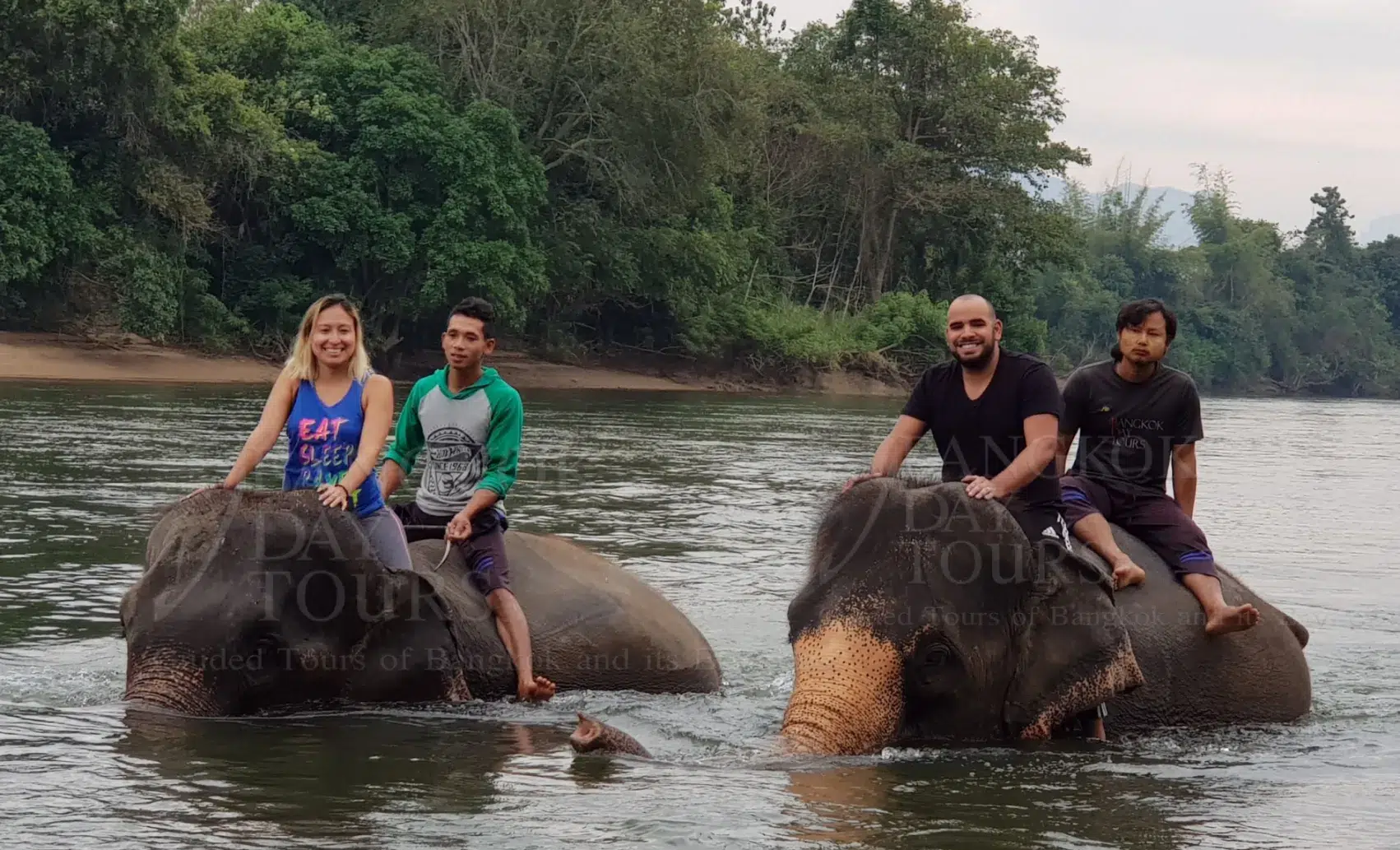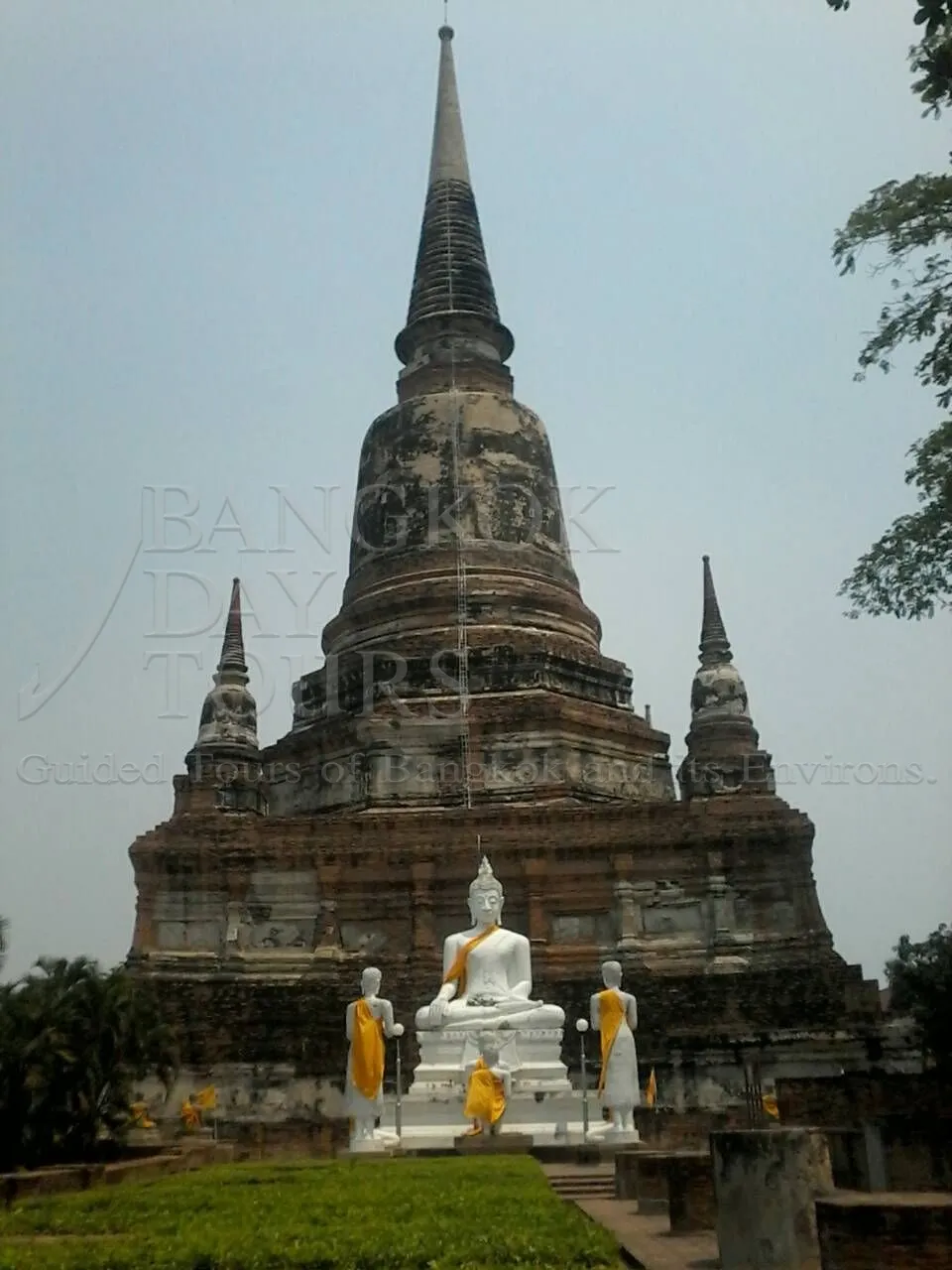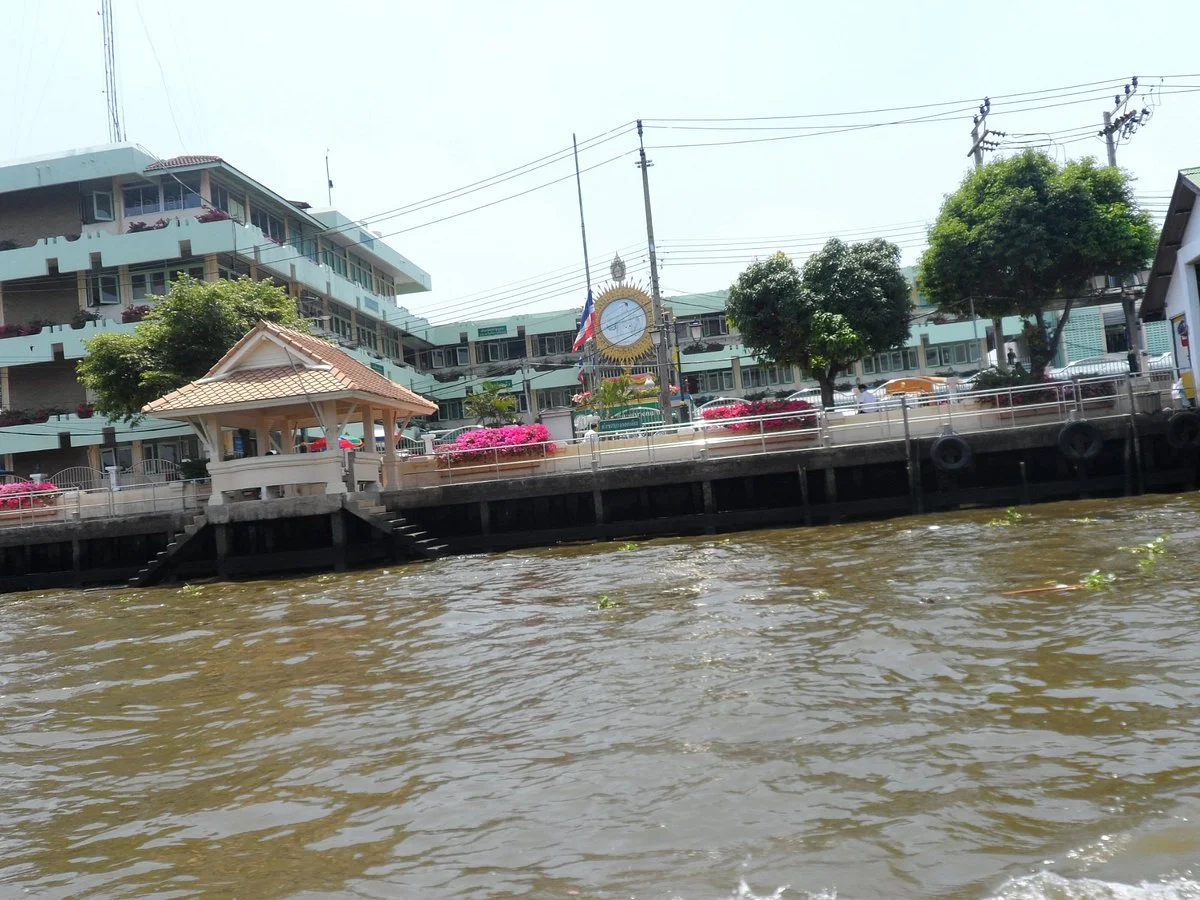
Attractions information
Klong Toey Port
Klong Toey Port is where the smaller cruise ships dock when they visit Bangkok. The port is 26 kilometers up the Chao Phraya River and is right in the heart of Bangkok city.
It's commonly known as Bangkok Port and was Thailand's only major port for sea transportation of cargo from 1938 until 1991.
The construction of Klong Toey Port began in 1938 and finished after the end of World War II.
The port is located on the Chao Phraya River not far from Gulf of Thailand. Due to its limited capacity and traffic problems caused by semi-trailer trucks, much of the shipping operation has been moved to the new container terminal at Laem Chabang in Chon Buri Province.
In the past Klong Toey was the major night entertainment area for the whole city of Bangkok. It had its heyday in the 1960's and 1970's dying out almost completely in the 1980's when the Bangkok Port Authority claimed the land that was home to the majority of the night entertainment venues.
The whole area is a bit tatty and grubby, like any port, but the positive side for the cruise ships docking here is that they are right in the centre of Bangkok and are not subjected to the two-hour drive from Laem Chabang.
Cruise ships using Klong Toey Port during the 2009-2010 season include Azamara Quest, Seabourn Odyssey, Seabourn Pride & Oceania Nautica.

Attractions information
Bang Pa In Palace
A summer palace designed for Thai monarchs during the 17th century, Bang Pa-In Palace has a charming collection of houses and pavilions.
There are a variety of Thai, Chinese, Italian & Victorian architectural styles surrounded by beautiful gardens as well as a lake with a magnificent sala in it.
Originally built by King Prasat Thong in 1632, Bang Pa-In Palace was abandoned after the sacking of Ayutthaya in 1767. The palace was partially restored by King Mongkut (Rama IV) in the 1850s and the restoration was completed by King Chulalongkorn (Rama V).
The gardens are wonderful and it's worth the stroll just to enjoy the scenery and the scents. There are plenty of trees which provide welcome relief from the heat of the morning sun & a brightly-painted lookout tower for those who are fit.
The beautiful pavilion of Phra Thinang Aisawan Thippa-At sitting in the middle of a lake has been designated as the archetype of the Thai pavilion or Sala Thai, a national symbol of Thailand. Built in the year 1876 it is the only Thai-style building in the palace.
Many consider this to be one of the finest buildings to be found anywhere in the Kingdom. The bronze statue standing in the middle represents King Chulalongkorn (Rama V) in the uniform of a Field Marshal and was erected by his son King Vajiravudh (Rama VI).
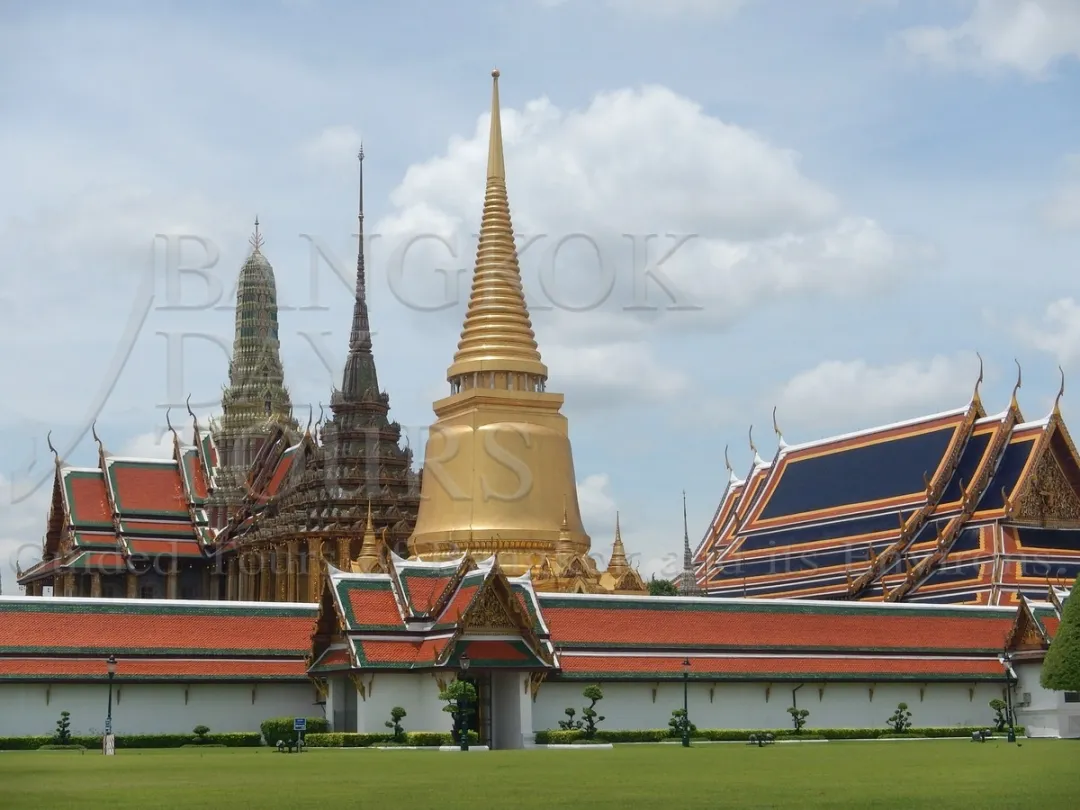
Attractions information
Ayutthaya Sacred City
Phra Nakhon Si Ayutthaya "The Sacred City of Ayutthaya" was founded in 1351 and reached its apex in the 16th century. It is an island embraced by three rivers, the Chao Phraya, Lopburi and Pa Sak.
In the Golden Age which lasted 417 years, Ayutthaya was the historic capital of Thailand.
The territory of the Kingdom of Ayutthaya extended far beyond present-day Laos, Cambodia, and Myanmar. During the 17th century, foreign visitors, traders and diplomats alike, claimed Ayutthaya to be the most illustrious and glittering city that they had ever visited. That ended forever in 1767 when it was conquered by the Burmese and completely destroyed.
Nowadays, visitors to Ayutthaya, which is only 86 kilometers north of Bangkok, can marvel at its grandeur reflected through numerous magnificent structures and ruins concentrated in and around the city island. The temple compounds are still awe-inspiring even in disrepair and a visit here is memorable and a good beginning for those drawn to the relics of history.
The architecture of Ayutthaya is a fascinating mix of Khmer, or ancient Cambodian style, and early Sukhothai style.
Most importantly, Phra Nakhon Si Ayutthaya Historical Park, an extensive historical site in the heart of Ayutthaya city, is a UNESCO World Heritage Site.

Attractions information
Wat Mahathat Ayutthaya
Wat Mahathat was built in the early days of Ayutthaya in the late 14th century by King Borommaracha I.
The story goes that the king had a revelation, and relics of the Buddha then suddenly appeared. The temple was built to house the relics.
Wat Mahathat Ayutthaya was built in the early period in 1374. The main stupa is Pang shape made of laterite but in the later periods was resored with brick.
The construction of Wat Mahathat was begun during the reign of King Borommarachathirat I in 1374 A.D. but was completed during the reign of King Ramesuan (1388-1395 A.D.) When King Songtham (1610-1628 A.D.) was in power the main prang (Khmerstyle tower) collapsed. The restoration work on the prang was probably completed in the reign of King Prasatthong (1630-1655 A.D.) During the restoration the height of the prang was considerably increased.
Wat Mahathat was restored once again during the reign of King Borommakot (1732-1758 A.D.) when four porticos of the main prang were added. In 1767 A.D. when Ayutthaya was sacked the wat was burnt and has since then been in ruins.
It is most famous for the Buddha head trapped in the Bodhi Tree.

Attractions information
Ayutthaya Long-tail Boat
Ayutthaya is an island encircled by a confluence of three rivers, the Chao Phraya, Lopburi and Pa Sak and it makes sense to take a local long-tail boat so you can get a different perspective of the city.
Many of the most interesting temples are only accessible from the river so you'll enjoy this.
The Chao Phraya, Lopburi and Pa Sak rivers are teeming with aquatic life and as you cruise you are likely to see a variety of snakes, monitor lizards and plenty of fish in the river. Surprisingly, you'll also see lots of children swimming and mothers doing their laundry on the steps of their houses.
A 17th century Dutch merchant described Ayutthaya as 'a city standing on a small island of the Chao Phraya River. Within the city walls, there are long, straight and wide roads. Canals have been dug from the river into the city, facilitating transportation.
Apart from the main thoroughfares, there are also a multitude of small canals, lanes and walkways. During the high water season, it is possible to paddle boats everywhere, even up to the house steps. Ayutthaya is a riverside city which has been carefully planned. It is truely a beautiful city'.

Attractions information
Klong Toey Port
Klong Toey Port is where the smaller cruise ships dock when they visit Bangkok. The port is 26 kilometers up the Chao Phraya River and is right in the heart of Bangkok city.
It's commonly known as Bangkok Port and was Thailand's only major port for sea transportation of cargo from 1938 until 1991.
The construction of Klong Toey Port began in 1938 and finished after the end of World War II.
The port is located on the Chao Phraya River not far from Gulf of Thailand. Due to its limited capacity and traffic problems caused by semi-trailer trucks, much of the shipping operation has been moved to the new container terminal at Laem Chabang in Chon Buri Province.
In the past Klong Toey was the major night entertainment area for the whole city of Bangkok. It had its heyday in the 1960's and 1970's dying out almost completely in the 1980's when the Bangkok Port Authority claimed the land that was home to the majority of the night entertainment venues.
The whole area is a bit tatty and grubby, like any port, but the positive side for the cruise ships docking here is that they are right in the centre of Bangkok and are not subjected to the two-hour drive from Laem Chabang.
Cruise ships using Klong Toey Port during the 2009-2010 season include Azamara Quest, Seabourn Odyssey, Seabourn Pride & Oceania Nautica.

Attractions information
Floating Market Damnoen Saduak
Waterways have always been an integral part of Thai life and many communities depended entirely on them for their daily existence.
Long before cars, boats of all shapes and sizes plied the rivers and canals through the kingdom of Thailand, trading their wares and delivering their supplies.
The Floating Market at Damnoen Saduak is located in Ratchaburi Province which is just over 100 kms or two hours drive from the capital city of Bangkok.
This is a particularly fertile area, being irrigated by a 32 kilometre straight-line canal constructed by King Rama IV way back in 1866.
It connects the Taachin River with the Mae Klong River and became a major transport artery between the provinces of Samut Sakorn and Samut Songkram.
Apart from providing transportation, Damnoen Saduak Canal also provides year-round water, with more than 200 small canals having been dug by farmers to irrigate their land.
The area is famous for the quality of its fruit, namely grapes, mangoes, bananas, oranges, papaya & coconut.
Nowadays, both sides of the canal are densely populated and bright and early every morning vendors from the surrounding area turn up to trade their wares.

Attractions information
Kanchanaburi Province
Kanchanaburi Province which borders Myanmar (Burma) to the north-west is the third largest Thailand's of seventy six provinces.
It is located 130 km west of Bangkok and has a population of about 735,000 of which 54,000 live in Kanchanaburi town itself. This is a most picturesque part of Thailand.
Kanchanaburi town was originally established by King Rama I as a first line of defence against the Burmese, who might use the old invasion route through the Three Pagodas Pass on the Thai-Burma border.
The magnificent landscape & charming beauty of Kanchanaburi have resulted in major tourist attractions including the well-known Erawan Waterfalls, caves which were once inhabited by Neolithic man, pristine national parks, tranquil rivers, virgin forests, and reservoir.
Together, they offer an intriguing experience whether you are visiting for the first-time or returning for another visit.
Whatever your personal interest: fishing, rafting, canoeing, mountain biking, bird-watching, star-gazing, golfing, elephants, tigers, jungle trekking or even living on bamboo rafts, Kanchanaburi takes pride in offering them all.
Local residents of Kanchanaburi are engaged in agricultural activities as this is one of the most fertile provinces. Most of the locals are of Thai ancestry with notable Mon and Karen minorities.
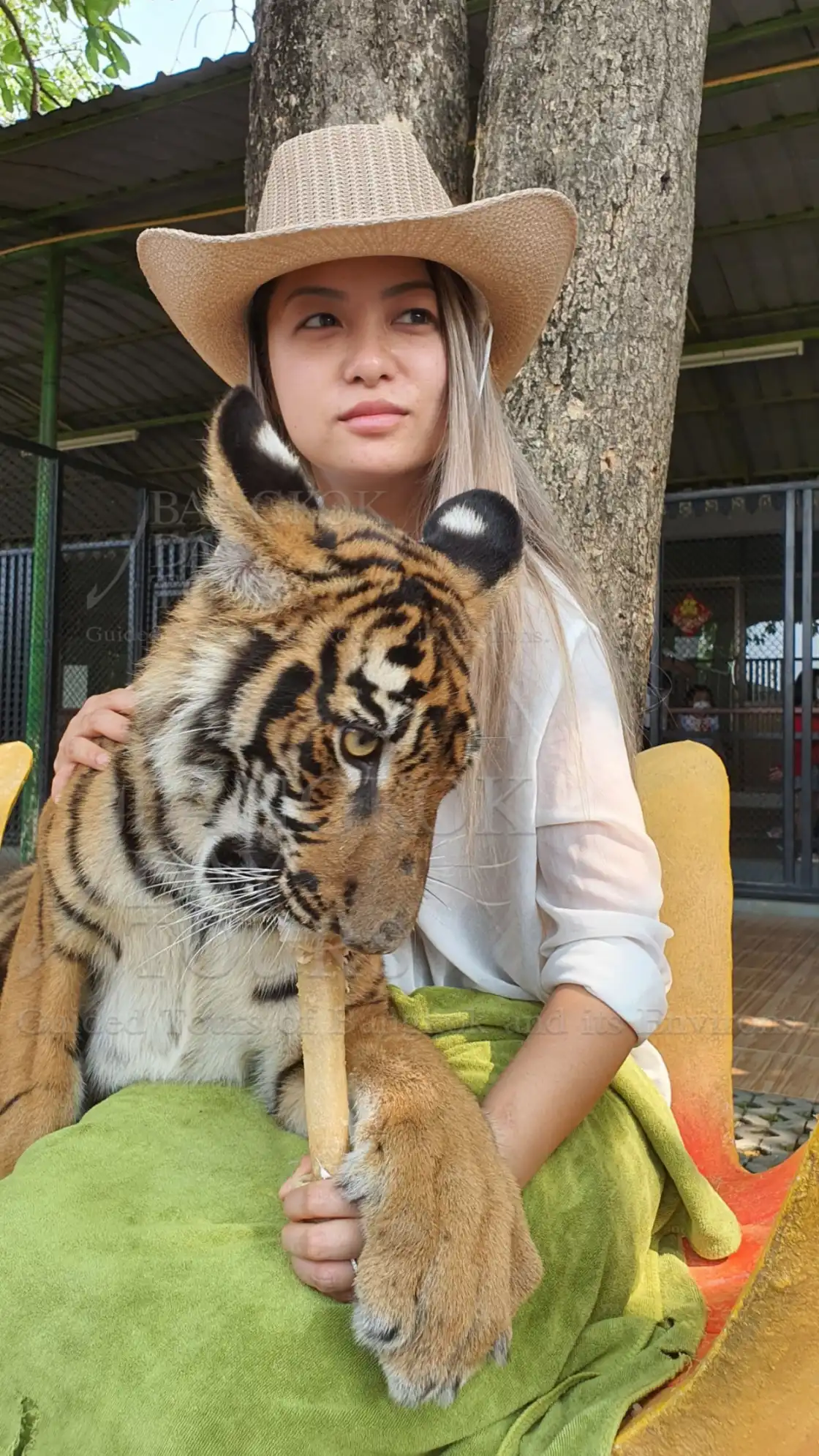
Attractions information
Tiger Temple Classic Afternoon
In Kanchanaburi Province there is a forest temple, founded in 1994, which has become a sanctuary for numerous wild animals including many tigers.
While it is more commonly known as The Tiger Temple, its Thai name is Wat Pha Luang Ta Bua Yannasampanno.
The abbot, Phra Acharn Phusit, has been caring for abandoned tigers since 1999. The mother of the first cub he took in had been killed by poachers. The first tiger cub died from its injuries, but a few weeks later two more tiger cubs were rescued from poachers and brought to the temple.
Word soon spread and more abandoned or injured tigers were brought to the temple. By 2005 there were 17 tigers at the temple. Seven were orphans rescued from the wild and ten have been born and bred here at the temple.
The monastery is situated adjacent to Burma. Protected areas and national parks along the Thai-Burma border are believed to contain the largest surviving populations of tigers in Thailand.
Unfortunately, while these areas are protected, poaching still occurs. A poacher can earn several years of a farmer's salary for killing a tiger, so the profit is well worth the risk. After the mother tiger is killed the cubs are taken as a bonus, or left to fend for themselves in the jungle and if found are left here.
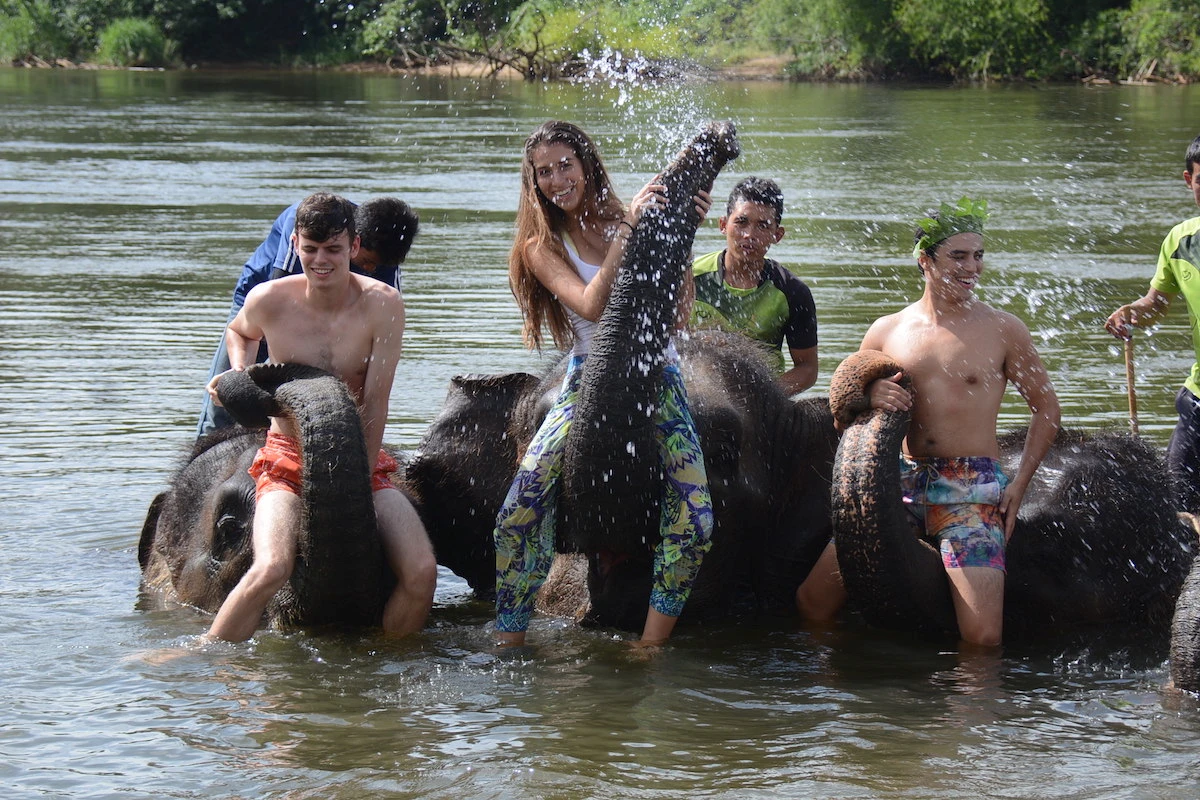
Attractions information
Ride & Bathe Elephants
In Thailand, elephants are the most revered of all animals and still play an active part within Thai society and culture.
In the past they have been used at the forefront of battles and in more recent times to assist in the logging trade. Now, visitors have the opportunity to ride and bathe them.
Despite their vast size, elephants are remarkably agile and are particularly adept at negotiating the narrow tracks in the forest. It's a little nerve wracking, especially when they are going downhill and so make sure you hold on tight.
They often pause along the way, bending far out to pluck some tasty morsel, oblivious to you perched high on their back.
The mahout will jump off during your trek and invite you to slide down onto the elephant's neck and take control. Be warned that their hair is prickly so shorts are not the best attire for this experience.
And also you will be able to bathe the elephants in the waters of the local river. You'll get wet, so don't forget your swimmers. We'll provide the life jackets for you if you want.
Important Information
Not every tour includes bathing the elephants. Please check the Tour Programme.

Attractions information
Bridge over the River Kwai
The Bridge over the River Kwai was built during World War II for the Japanese Army using Allied POWs.
Altogether, 61,700 British, American, Australian, Dutch and New Zealand soldiers and a large number of Chinese, Vietnamese, Japanese, Malaysian, Thai, Burmese and Indian labourers were involved.
Two bridges were actually built side by side. A wooden trestle bridge, which is no longer there, was completed in February 1943 and an eleven span steel bridge completed in April 1943.
This bridge had been dismantled by the Japanese and brought to Kanchanaburi from Java in 1942. The central spans were destroyed by Allied bombings and rebuilt by British Army Engineers immediately after the war.
It was part of the strategic railway linking Thailand with Burma. During the construction of the bridge over the Khwae Yai River - River Kwai as it is known among foreigners - the brutalities of war, disease and starvation claimed thousands of POWs lives.
The bridge was immortalised in the book by Pierre Boulle entitled The Bridge Over The River Kwai and later in the movie of the same name. Unfortunately, he had never been to Kanchanaburi or he would have known that the railway does not cross the River Kwai. It actually crosses the Mae Klong River, so the Thai authorities simply renamed the river to aid tourism!

Attractions information
Klong Toey Port
Klong Toey Port is where the smaller cruise ships dock when they visit Bangkok. The port is 26 kilometers up the Chao Phraya River and is right in the heart of Bangkok city.
It's commonly known as Bangkok Port and was Thailand's only major port for sea transportation of cargo from 1938 until 1991.
The construction of Klong Toey Port began in 1938 and finished after the end of World War II.
The port is located on the Chao Phraya River not far from Gulf of Thailand. Due to its limited capacity and traffic problems caused by semi-trailer trucks, much of the shipping operation has been moved to the new container terminal at Laem Chabang in Chon Buri Province.
In the past Klong Toey was the major night entertainment area for the whole city of Bangkok. It had its heyday in the 1960's and 1970's dying out almost completely in the 1980's when the Bangkok Port Authority claimed the land that was home to the majority of the night entertainment venues.
The whole area is a bit tatty and grubby, like any port, but the positive side for the cruise ships docking here is that they are right in the centre of Bangkok and are not subjected to the two-hour drive from Laem Chabang.
Cruise ships using Klong Toey Port during the 2009-2010 season include Azamara Quest, Seabourn Odyssey, Seabourn Pride & Oceania Nautica.
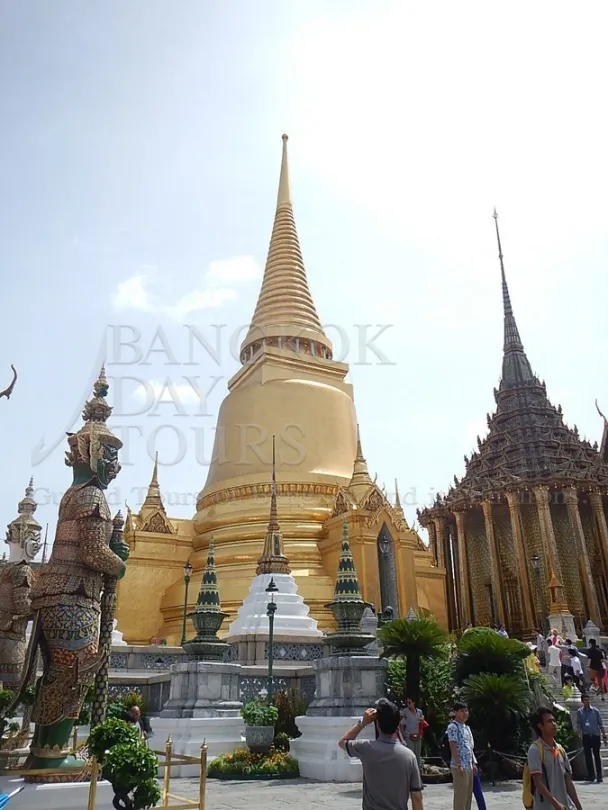
Attractions information
Wat Saket Golden Mount
The Golden Mount or 'Phu Khao Thong' is part of the Wat Saket temple located just outside the old royal city precincts, next to the Pom Mahakhan fort.
There are about 300 steps in all & it's not a strenuous climb, as the slope is quite gentle and there are numerous spots to stop and see something.
The Golden Mount has a somewhat unusual history in that it was expanded by King Rama III, who wanted to build a large chedi on the site to mark the entrance to the city. However, the soft marshy ground could not support such a large structure and it collapsed before it was completed.
During the late-18th century the temple served as the capital's crematorium. During the following 100 years, the temple became the dumping ground for some 60,000 plague victims who were not allowed to be buried within the royal city precincts.
From the ground, a wide stairway spirals up and around the sides of the mount and the short steps ensure you don't expend too much energy.
The best time to visit the temple is during the cool season from late November to January, when not only is the temperature much cooler, but the frangipani trees around the base are in bloom, giving off their wonderful jasmine-like smell.
In the first week of November, Wat Saket hosts an annual temple fair with lots of lanterns.
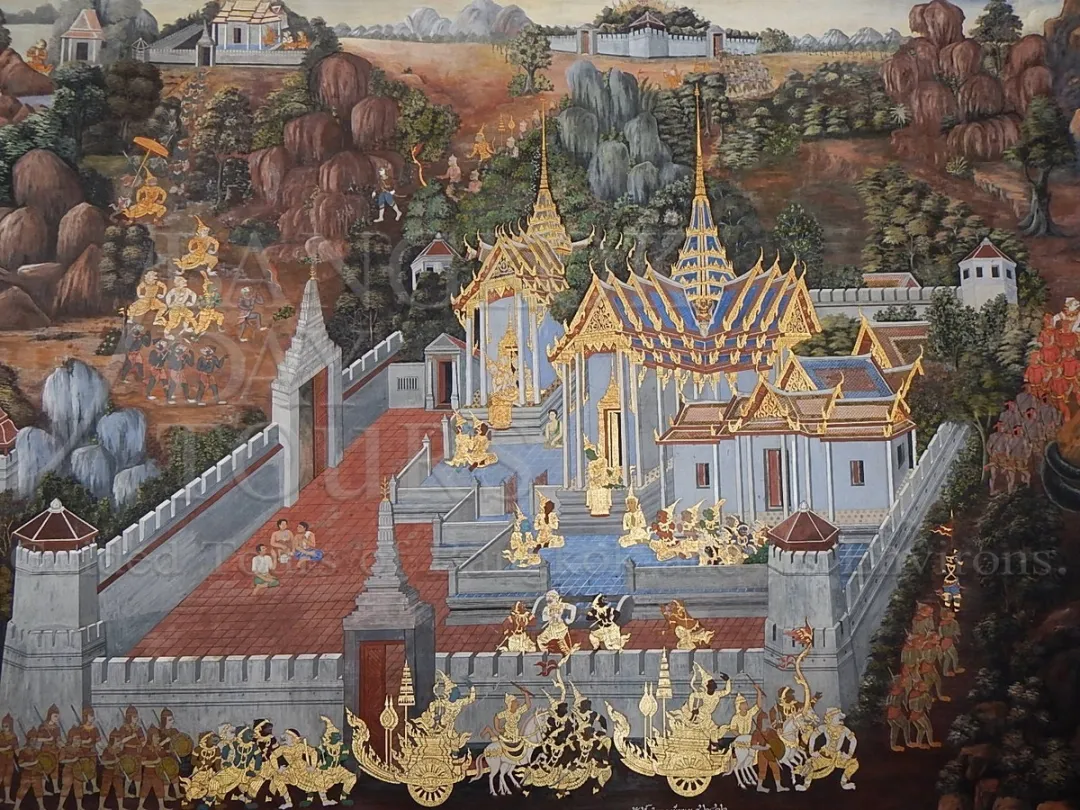
Attractions information
Grand Palace Bangkok
The Grand Palace is the most spectacular place in Bangkok, so if you only see one thing whilst in the city, this is the place to see.Thai people respectfully refer to it as Phra Borommaharatchawang. It served as the official residence of the King of Thailand from the 18th -20th century.
The Grand Palace complex, construction of which began in 1782 during the reign of King Rama I, sits on the east bank of the Chao Phraya River and is surrounded by a defensive wall 1,900 metres in length, which encloses an area of 218,400 square metres. Within its walls, in times past, were the Thai war ministry, state departments, and even the mint.
Within the palace complex are several impressive buildings including Wat Phra Kaeo or the Temple of the Emerald Buddha, which contains the revered Emerald Buddha that dates back to the 14th century.
Thai Kings stopped living in the palace in the middle of the twentieth century, but the royal residence is still used by visiting dignitaries.
Important Information
A strict dress code applies here. The Grand Palace and The Temple of the Emerald Buddha is Thailand's most sacred site. Visitors must be properly dressed before being allowed entry to the temple. Men must wear long pants and shirts with sleeves. No tank tops or singlets. Women must be similarly modestly dressed. No see-through clothes or bare shoulders. No shorts or tights. Proper shoes must be worn. No flip flops.
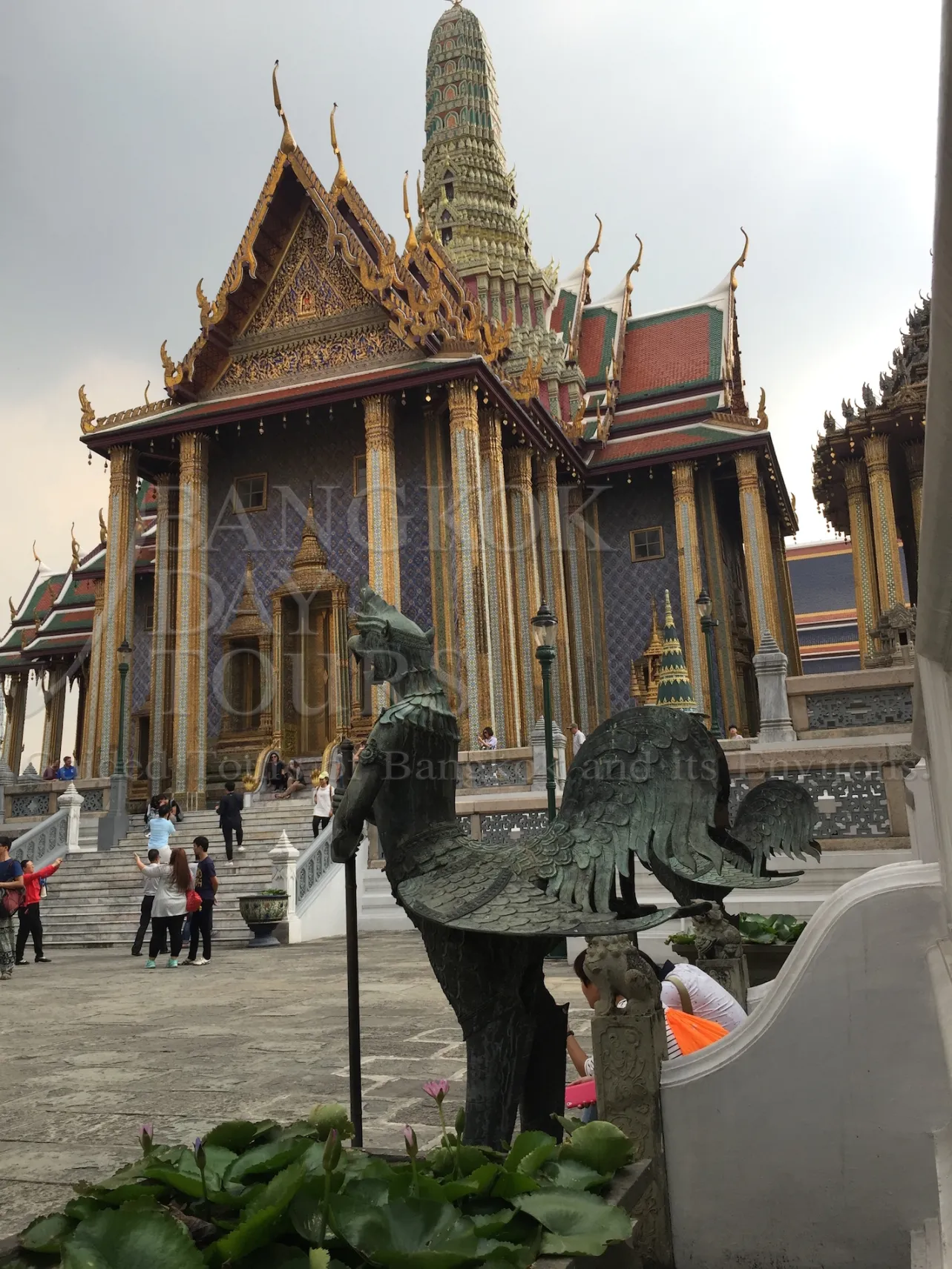
Attractions information
Wat Phra Kaew Emerald Temple
Wat Phra Kaew is regarded as the most sacred Buddhist temple in Thailand and is within the grounds of the Grand Palace.Unlike other temples it does not contain living quarters for monks. Rather, it has only the highly decorated holy buildings, statues, and pagodas. Strict dress code applies here.
The construction of the temple started when King Rama I moved the capital from Thonburi to Bangkok in 1785. The main building is the central ubosoth, which houses the Emerald Buddha.
Legend holds that the statue originated in India, but it first surfaced in the vassal Kingdom of Cambodia and was given as a gift to the King of Ayutthaya in the 15th century 1434.
The image disappeared when Burmese raiders sacked Ayutthaya and the image was feared lost.
Important Information
A strict dress code applies here. The Grand Palace and The Temple of the Emerald Buddha is Thailand's most sacred site. Visitors must be properly dressed before being allowed entry to the temple. Men must wear long pants and shirts with sleeves. No tank tops or singlets. Women must be similarly modestly dressed. No see-through clothes or bare shoulders. No shorts or tights. Proper shoes must be worn. No flip flops.
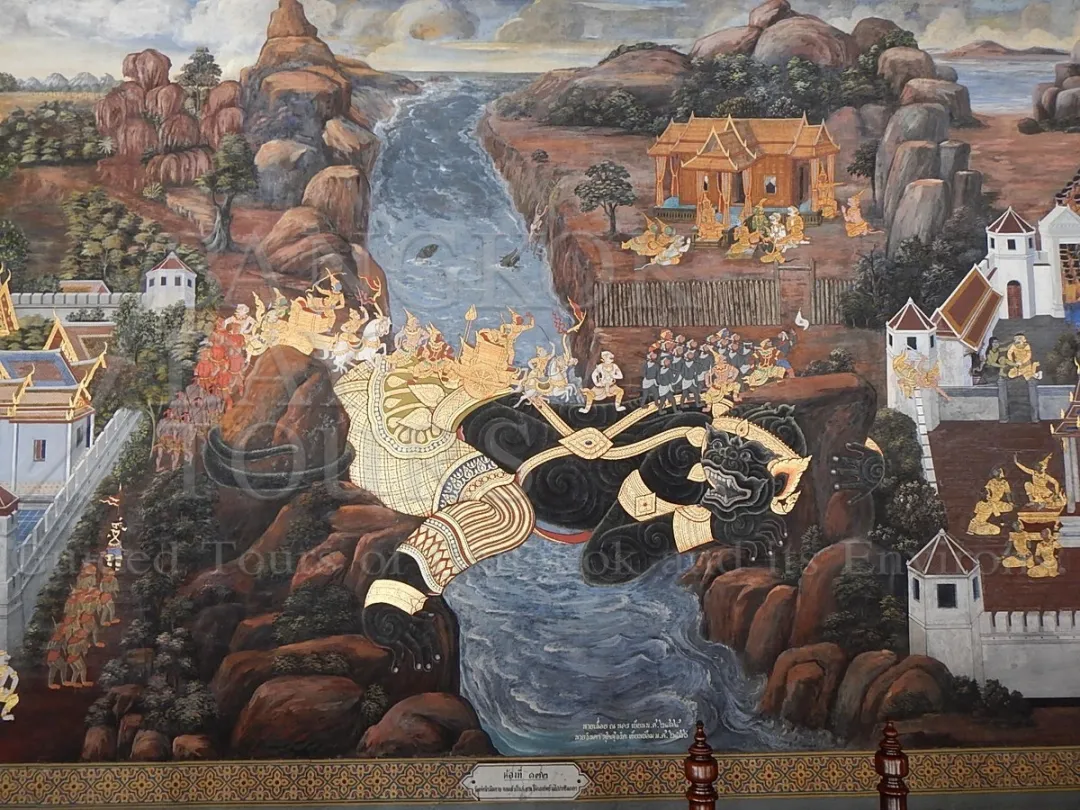
Attractions information
Chao Phraya River
The Chao Phraya River is regarded as the bloodline of the Thai people. It has its origins in four rivers flowing from the northern region of the country, the Ping, Wang, Yom and Nan which meet at Pak Nam Pho in Nakhon Sawan Province. The Chao Phraya River is 370 kilometers long.
Much of Thai history can be traced along the banks of the Chao Phraya River, because in the early days Thai people settled along the river banks and only with the advent of roads in recent times have they ventured further away.
Today the Chao Phraya River remains the most important waterway for the people of central Thailand.
It is a working river, with daily commuter boats plying up and down from Nonthaburi to Sathorn covering 31 piers along the way.
Tug boats towing three or four barges laden with sand are frequently seen as they make their way to the various construction sites down river.
In the evening, as dusk gives way to night, many dinner cruise boats take their place on the river, going up as far as the Rama VIII bridge and downstream to the Rama IX bridge.
The Chao Phraya River is vibrantly interesting in the daytime and romantically beautiful at night.
Azamara Three Day Tour (Code:KT3101)
Pick a day and people
THB 29,900.00
THB 33,900.00
THB 44,900.00
THB 51,900.00
THB 63,900.00
THB 75,900.00
THB 86,900.00
THB 98,900.00
THB 115,900.00
THB 127,900.00
THB 139,900.00
THB 151,900.00
This tour is exclusive to Klong Toey Port Cruise Ship Passengers. There are also exclusive tours.
During the 2009-2010 season, Azamara Quest is indulging passengers with a three-day stopover in Bangkok. This allows time for day trips to the World Heritage site of Ayutthaya and Kanchanaburi, together with a morning tour of the main sights in Bangkok before the ship sails late in the afternoon.
Do you want your tailor-made tour?
A tailor-made tour is the best kind of independent travel itinerary, designed and arranged just for you and your needs.
All events and activities are part of your very personal, privately guided tour.
Just ask us and we will be happy to make your tour an unforgettable experience. We have been doing this for 25 years and the quality of tailor made tours has never changed.
Why is a private tour a better choice?
With a private tour, you have the freedom to choose what you want to do and when you want to do it. There is much more room for flexibility and changes to your itinerary at every step of the way because you don't have to consider the needs of other travelers. The flexibility and freedom to make the most of your time is the reason why so many people choose to take a private tour rather than a group tour.Tour Programme
08:00 - Day 1 Departs
08:00 - Pick up dockside Klong Toey Port
We'll be waiting for you when you get off the ship. Your guide will have a sign with your name on it. The sooner you get off the sooner we can leave.Read More >
10:00 - Bang Pa In Palace
You can take the circular walk around the palace buildings and gardens, enjoying the scents along the way. This palace includes what is arguably the most beautiful building in all of Thailand. The Phra Thinang Aisawan Thippa-At Sala.Read More >
12:30 - Lunch in a Thai Restaurant
Lunch will be served in a local Thai restaurant in Ayutthaya.Read More >
13:30 - Ancient Temples in Ayutthaya
Most of the afternoon will be spend visiting some of the ancient temples, like Wat Mahathat & Wat Lokayasutharam, each one having its own unique characteristics. Read More >
16:00 - Long-tail Boat Trip
Later in the afternoon you can take a long-tail boat trip around the island of Ayutthaya stopping at the elephant kraal along the way.Read More >
17:00 - Depart for Klong Toey
You can relax in air conditioned comfort while the driver returns you to your ship at Klong Toey
19:00 - Arrive back at your ship
You can expect to be back on board by 7:00pm
07:00 - Day 2 Departs
07:00 - Pick up dockside Klong Toey Port
We'll be waiting for you when you get off the ship. Please don't be late or we'll miss the floating market.Read More >
08:30 - Floating Market Damnoen Saduak
You can take the boat on the canal through the floating market. Please keep your hands inside the boat as there are many boats and we don't want you to jam your fingers.Read More >
11:30 - Lunch in a Thai Restaurant
We'll have an early lunch in a Thai restaurant so that we are at the Tiger Temple when they open the gates.Read More >
12:30 - Tiger Temple Wat Pha Luang
We'll get you to the Tiger Temple nice and early so you'll have maximum time there. They'll bring out the younger tigers first and then lead the adult tigers down to the canyon for their afternoon swim and play. Read More >
15:00 - Elephant Riding & Bathing
The elephant camp is not far from the Tiger temple and here you'll be able to experience the unique sway of an elephant ride. After, you can bathe it in the clear waters of the Kwai river.Read More >
16:45 - Bridge over the River Kwai
We'll stop at the bridge on the way back to Bangkok. You'll have time to walk on the bridge and take some photos. Read More >
17:15 - Depart for Bangkok
You can relax in air conditioned comfort while the driver returns you to your ship in Bangkok.
19:30 - Arrive back at the ship
You can expect to be back at the ship by 7:30pm depending on the traffic.
08:00 - Day 3 Departs.
08:00 - Pick up dockside Klong Toey Port
We'll be waiting for you when you get off the ship. The sooner you get off the sooner we can leave.Read More >
09:00 - Sightseeing Tour of Bangkok
On the way to the Grand Palace we'll make sure you see some of the sights of the city including the Golden Mount along the way. Read More >
10:00 - Grand Palace
The Grand Palace has been home to generations of Thai Kings, although the current King Rama IX does not live here.Read More >
11:00 - Wat Phra Kaeo
Wat Phra Kaeo or the Temple of the Emerald Buddha is located within the walls of the Grand Palace and is Thailand's most revered temple. Please dress accordingly.Read More >
12:00 - Lunch beside Chao Phraya River
You'll be able to enjoy some delicious Thai food in a restaurant alongside the Chao Phraya River. Don't worry, not all Thai food is spicy!Read More >
13:00 - Return to the Ship
You can expect to be back on board around 2:30pm and earlier if need be.
Important Information
A strict dress code applies at The Grand Palace. Men must wear long pants and shirts with sleeves. No tank tops or singlets. Women must be similarly modestly dressed. No see-through clothes or bare shoulders. No shorts or tights. Proper shoes must be worn. No flip flops.
At the Tiger Temple women must cover their shoulders and knees. Tank tops, short skirts, shorts, shawls and scarves are not permitted. Tights cannot be worn as an outer garment. Bright colours such as red, orange, and pink are not allowed.




